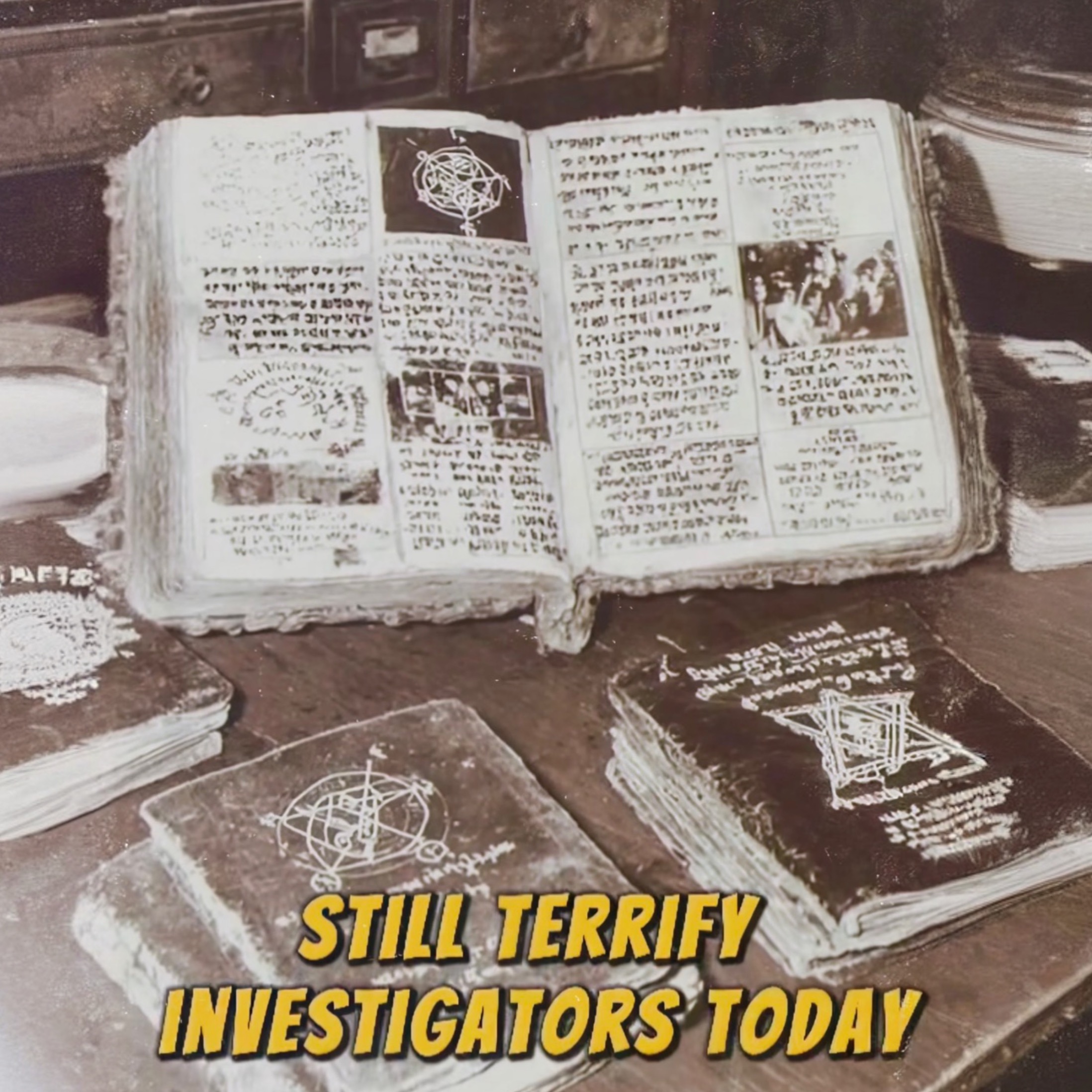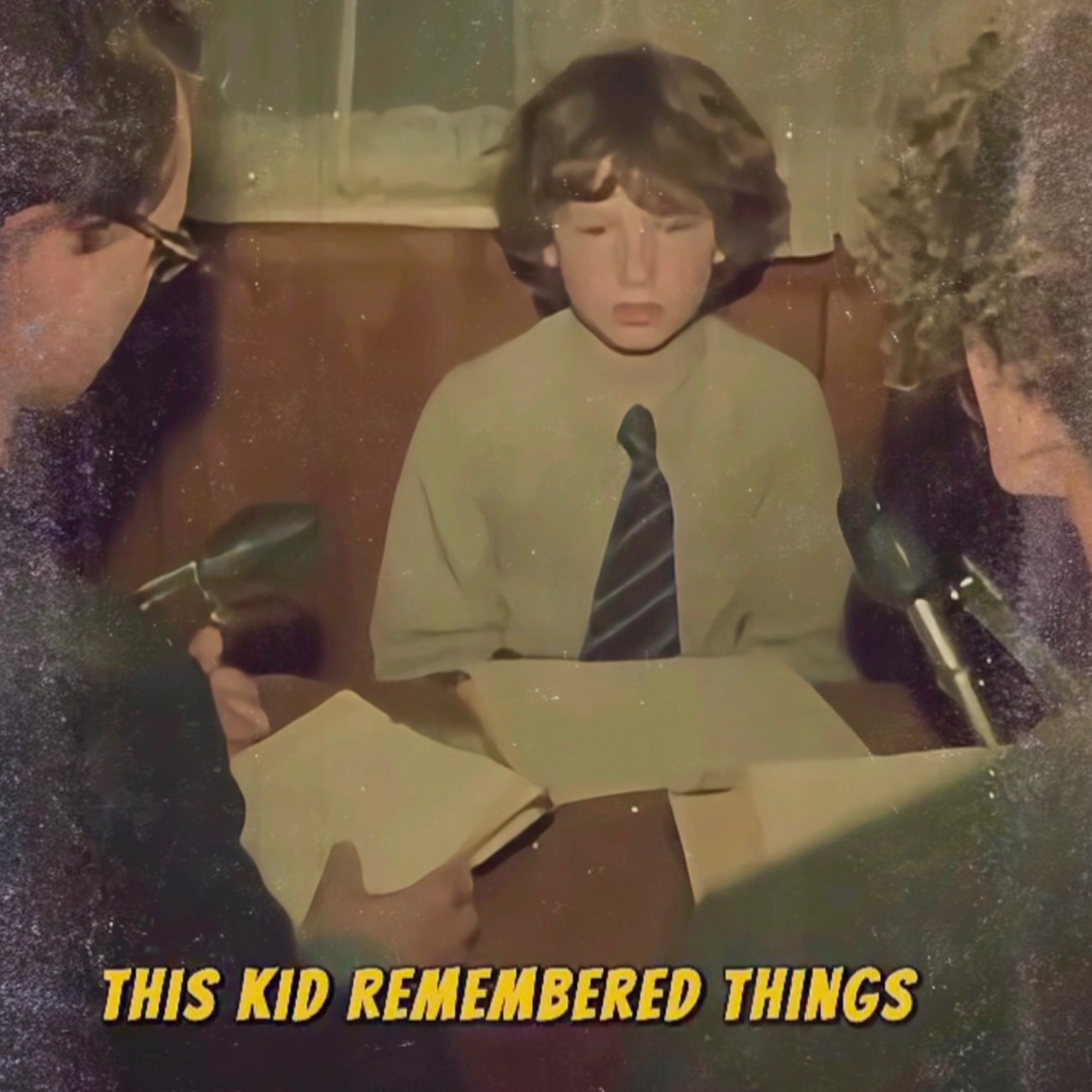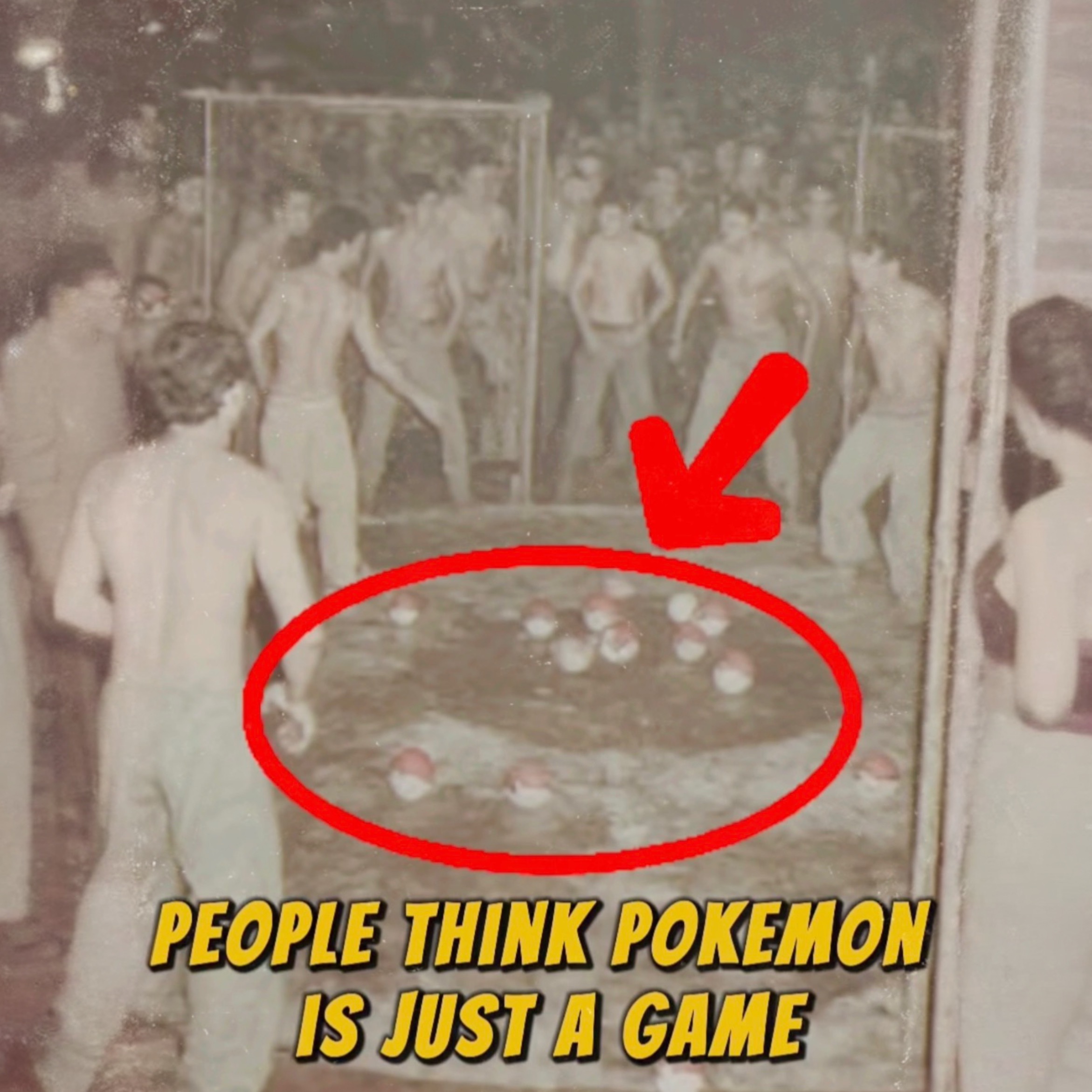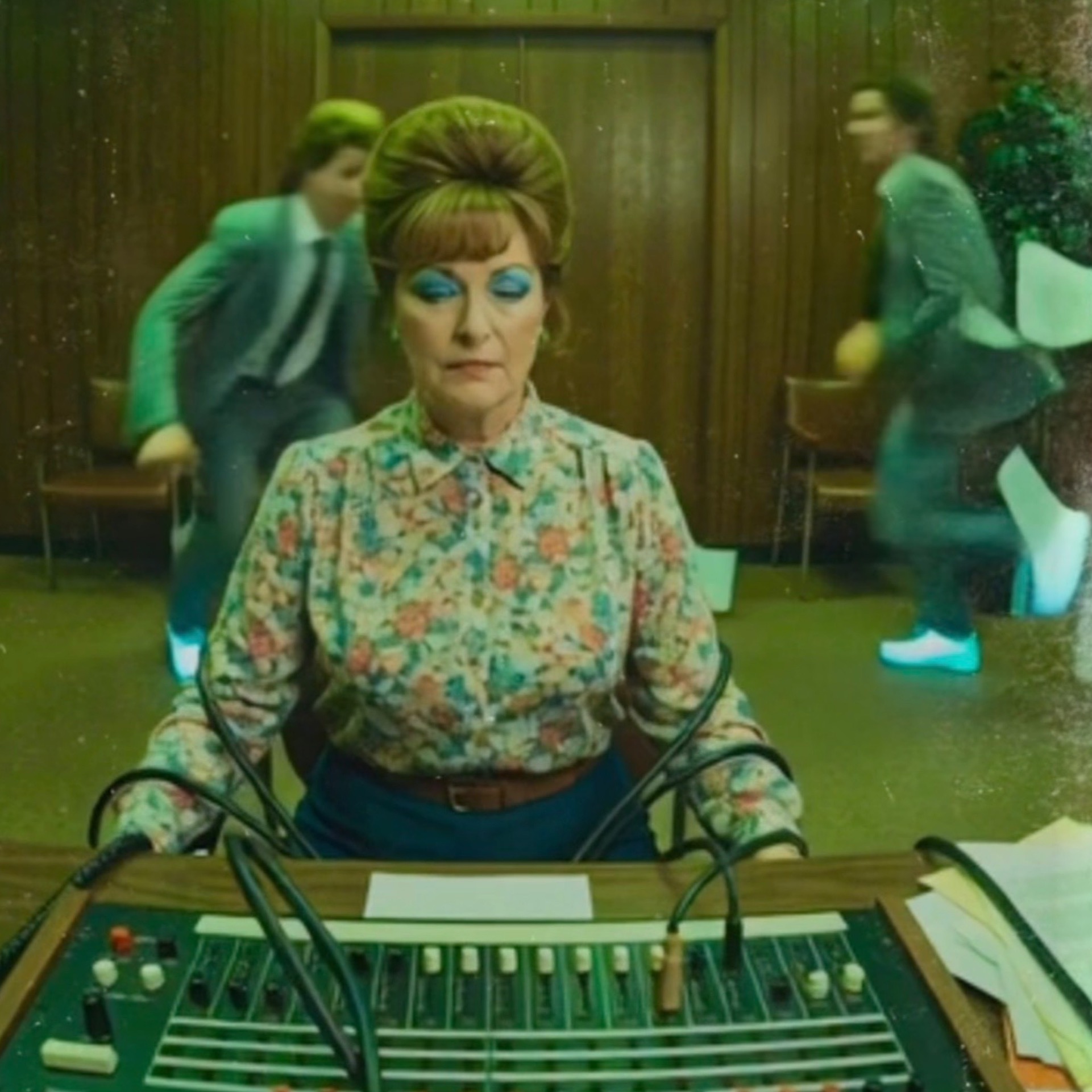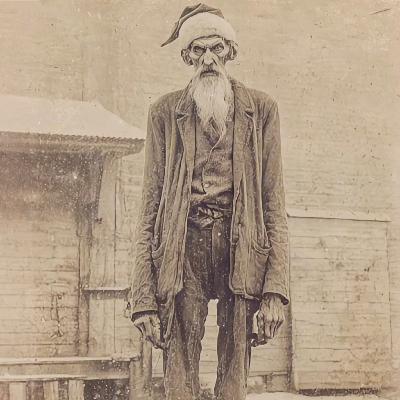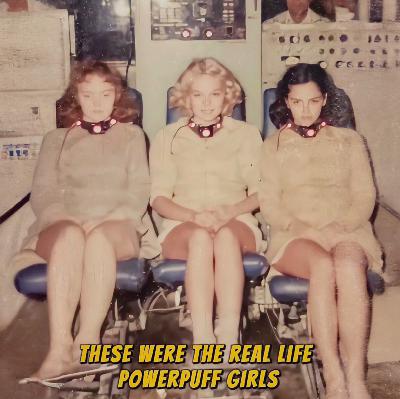Discover Inspector Story
Inspector Story

Inspector Story
Author: Inspector Story
Subscribed: 12Played: 619Subscribe
Share
Description
Ever watched an Inspector Story video and thought, “Wait… what happened next?” or “Hold up, I need more details on this madness”? Well, you’re in luck—this podcast is where we dive deep, unravel mysteries, and answer all the wild questions you’ve been dying to ask.
From alternate endings to hidden clues and fan theories, we’re breaking down every story—Inspector Story style. No loose ends, no unanswered questions—just pure, unfiltered deep dives into every wild tale.
So if you love the chaos, the twists, and the what-the-hell moments, hit play and let’s get to the bottom of it. 🔥🎧
305 Episodes
Reverse
In late-1950s Memphis, an unknown musician named Lucian Deville went nowhere—until 1958, when a song called “Midnight Promise” spread through the city overnight. Jukeboxes replayed it nonstop, and listeners said the melody felt magnetic, like something inside the track was pulling them back.In 1962, studio technician Eli Verse noticed something buried beneath Lucian’s recordings: a deeper voice under the music. When he ran the tape backward, it wasn’t random noise. Slowed down, it sounded like calm words—structured like a ritual. Later, journalists uncovered that Lucian had purchased a strange old book in 1957 from a Memphis antiquarian, rumored to teach rituals that could be hidden inside music.On June 4, 1964, Lucian stopped singing mid-chorus during a live performance, turned away from the crowd, and calmly walked off stage. He was never seen again.
This kid remembered things he should have never known—and none of it made sense.In the summer of 1962, in a quiet town in western Montana, the Halberts started noticing something odd about their six-year-old son, Evan. Whenever they drove outside the familiar streets, he would sit up in the backseat and calmly say things like, “Turn left here,” or “There’s a red barn behind those trees.” The family had never taken those roads before.They assumed he was just guessing—until one afternoon, miles from anything they recognized, he whispered, “This used to be blue.”He pointed at an empty patch of field and said there had been a house there, with a squeaky door and a bedroom upstairs that he called his. His father pulled over. Evan got out, walked across the field like he knew where everything used to be, then knelt and put his hand on the ground.“Right here,” he said. “The stairs were right here. This is where I died.”Two weeks later, out of desperation, his parents checked the county archives. Old property records showed that a farmhouse had once stood on that exact land. It burned down in 1949. Only one person died in the fire—a young boy, the same age Evan claimed to have been, with a house layout that matched his description.When reporters later asked Evan about it, he said he didn’t remember saying any of that.He only said, “Sometimes, my dreams don’t feel like mine.”
This is the true story of an American town that vanished because of a book.In the summer of 1967, Mark and Dina Pines were sent to stay with their great-uncle Harold in a small forest town in Oregon, officially known as Gravity Fall. At the time, it was a real place—a sheriff’s office, a school, a lumber mill, and just under 900 people.Three weeks into their visit, Mark found a loose floorboard in Harold’s cabin. Underneath was a leather-bound book wrapped in chains and animal hide. Inside were symbols, rituals, and sketches of creatures that didn’t match anything in the natural world. When Harold saw it, his hands started to shake. All he said was: “They were never supposed to be let out.”Then Gravity Fall started to come apart.People reported shadows moving with no one to cast them. Footprints stopped in midair. Voices came out of the trees, calling residents by name.On the final night of summer, a violent storm hit. Phone lines went dead. Every road into Gravity Fall collapsed or washed out.When authorities finally reached the site two days later, the town wasn’t damaged.It was gone.
People think Pokémon is just a game—but this legend says it started as something darker.In the summer of 1967, in Saffron City, New Jersey, a quiet boy named Eli Oakson began a neighborhood “battle” game behind an abandoned toy factory. It started with chalk circles, nicknames, scoreboards, and made-up “types.” But as the boys grew older, the rules changed. Cages appeared. Money changed hands. The game hardened into an underground ring.By 1975, the toy factory had become a welded scrap-metal arena. Adults packed Friday night fights. Locals reported missing livestock and gunshots after midnight. On December 3rd, 1975, a high-stakes match spiraled into chaos—animals broke free, spectators were hurt, and the crowd stampeded out.When police raided the factory minutes later, it was empty… except for Eli. He sat alone in the chalk ring, writing in his notebook. The page read: “New Division: Human versus human.”
Zip Miller wears Nikes with his suit because he discovered a glitch in the stairwell.In an otherwise normal office building, Zip figured out that if he sprinted the stairs between floors 4 and 5 at just the right angle and speed, he didn’t just go down a floor—he slipped into yesterday. He could redo workdays, clean up mistakes, and show up with answers before anyone even knew they had questions.It made him a legend.Zip became the most efficient employee in company history. He could drop a finished report on your desk five minutes before you realized you needed to start writing it. He’d hand you a tissue before you felt the tickle in your nose. The office loved him. Then they started to fear him. It’s unsettling when someone is always one step ahead of your future.He used the glitch so much he drifted out of sync. To him, everyone else moved like mannequins while he buzzed on caffeine and lost days. He carried one thing he couldn’t deliver: a crisp envelope addressed to “Dean Calendar, Payroll,” stamped in red, “Error. User does not exist.” Dean had deleted himself from the timeline last week. The envelope was just… spare time with nowhere to go.Today, Zip pushed it too far. He ran the stairwell again, trying to get a head start on the fiscal quarter—running so fast he lapped himself. He turned the corner and crashed into his own back.Now he’s stuck in a loop on the stairs, tripping over himself forever.And the stairwell between floors 4 and 5 is permanently clogged.
They called her Ms. Gable. She didn’t just man the front desk—she was grown into it.For forty years, Ms. Gable worked reception in a bland corporate building. She never took a lunch break. Never left the board. According to office legend, the company had wired her nervous system directly into the building’s main fuse box and a massive Operator’s Mate switchboard. The black cables that coiled around her desk weren’t just wires—they pulsed like veins.She routed every call. And if she didn’t like your tone, she could do more than hang up.Workers whispered about “infinite hold”—a static-filled void between floors. People said if Ms. Gable patched your extension there, you’d step into the elevator on a Tuesday and come out weeks later, starving and disoriented… if you came back at all.Then Zip Miller from the mailroom tried to make a run for the exit.He was fast. But Ms. Gable didn’t chase him. She watched him and, the story goes, patched his physical location into the basement incinerator. Zip vanished mid-stride. After that, the pneumatic tubes overhead sometimes rattled like someone was still inside them, frantically tapping.On a day when the board was overheating and sludge was leaking from the coffee machine, she patched Mr. Paxton through to upper management. The voice on the other end wasn’t a person—just a dial tone that sounded like it was quietly weeping.The building is still open. Ms. Gable is still at the desk. If you call the main line and she answers, you might want to stay silent.She’s just waiting for a reason to transfer you.
The reason why this Santa lost so much weight will shock you.In 1917, in a small town in northern Massachusetts, Nick O’Lodion was more than a neighbor—he was Santa. Every year he put on the red suit, handed out gifts, and made sure no family went without something under the tree.That year, something was off.Nick hadn’t been seen in almost a year. When he finally showed up in December, he looked wrong. Thinner. His suit sagged. His cheeks were hollow. People assumed he’d been ill and was pushing through for the kids.Then families started dying.Beginning December 1st, and every night after, an entire household was found dead by morning. No signs of a struggle. No broken windows. No footprints in the snow. It went on for three weeks. By the end, nearly half the town was gone.On Christmas Eve, a blizzard buried the roads. People survived the night by huddling around fireplaces.On Christmas morning, police were called to the Smith family’s house. The rooms were still. The tree stood unbothered. There was no forced entry. Nothing out of place.Until an officer said: “Check under the chimney.”
“This is the true military experiment behind Totally Spies—and it was never meant to be shown.”In the late 1990s, outside San Diego, the U.S. military allegedly launched a secret program called Project S.P.I.E. Its goal was simple on paper: create perfect teenage operatives for future urban warfare. Three girls were quietly pulled from foster systems around the country. Their original files were erased. Their new names were just codenames: Sam, Alex, and Clover.From age 13, they were trained in hand-to-hand combat, espionage, interrogation resistance, and psychological manipulation. Sensors were implanted in their wrists. Tracking chips were placed behind their ears. Every emotion they felt was logged.By 2001, the program was “too successful.” The girls could slip into locked areas, disarm guards in seconds, and complete missions without witnesses remembering how they escaped. Then a live extraction drill went wrong. At a mock suburban high school, six military contractors vanished. Security footage showed the three girls going in. None of the contractors were ever seen coming out.The program was shut down. Files were sealed.Two years later, three “exchange students” showed up at a private school in Beverly Hills—popular, athletic, perfect. Students who got too close to them started disappearing, quietly.In 2006, investigators found the old S.P.I.E. facility. Deep underground, one screen was still on. It showed three girls walking toward the camera. One of them smiled and said:“Mission never ended.”
They called him Mr. Paxson. He was the most productive man in the office—not because he loved his job, but because of what he drank.In a bland corporate building, the break room had a secret. At its center stood the Latte 9000—a 10-foot, crow-like coffee machine built in 1974. Every morning, employees gathered around it, listening to the groan of old machinery and the hiss of steam. Paxson treated it like an altar.The machine wasn’t just serving coffee.According to whispers and one terrified accounting clerk named Dean, the Latte 9000 was leaking something into the water line—a neural suppressant. The more people drank, the more productive and detached they became. Workers started sleeping under their desks, smiling at spreadsheets, and stopped going home. The break room turned into a shrine of offerings: expired coupons, staplers, little personal objects.One night, Dean tried to unplug it. He found no cord—only a thick cable fused into the main breaker panel, labeled “Aurora Protocol.” When he pulled the kill switch, the machine didn’t die. It screamed. Thick, dark sludge poured out of the nozzle.It wasn’t coffee. It was “spent thought.”The sludge splashed onto Dean’s face. He didn’t scream. He just went back to his desk, clipped on his tie, and started working.He’s still there. So are the others.Just waiting for the next cup.
They called him Dean Calendar because one morning in 1984, he didn’t just call in sick—he erased Monday.Dean worked payroll at a paper company in Dayton, Ohio. He was quiet, wore a clip-on tie, and knew the mainframe better than his manager. Every Monday, he watched the same scene: groans, coffee, and complaints about the week starting again.One night, he found a hidden test file meant for daylight savings time. Instead of adjusting the clock, he changed something else. He renamed Monday to “Part 2 of Sunday,” and the system believed him. Payroll skipped the date. Checks still cleared. Nobody noticed.Dean started applying the same trick to other branches, quietly, after hours. By winter, five offices had no Mondays. Trucks arrived off-schedule. Flights were missed. Morale went up anyway.When IT tried to fix the bug, things got worse. For twelve hours, the system jumped from Sunday straight to Tuesday. Monday didn’t exist on any of their charts. Only one name showed up in the error logs: Calendar.D.When they went to Dean’s apartment, it was empty. No forwarding address. Just a sticky note left on the desk.“If you can read this,” it said, “it’s Tuesday.”
“This is the true story behind Barney and Friends—and it’s genuinely terrifying.”In the early 1990s, a small studio in Dallas hired a struggling children’s performer named Barnaby Grin to test a purple dinosaur mascot costume. The producers wanted something soft and harmless. From the first recording session, the crew noticed that whenever Barnaby put on the suit, his voice changed in a way that didn’t sound like acting.Then people started disappearing.The first was cameraman Phil McCracken. The last tape he shot showed Barnaby in full costume, standing alone on the set, staring directly into the camera long after everyone else had left. Over the next few months, three more crew members vanished. The studio replaced them quietly and kept filming. After each disappearance, the Barney suit was found somewhere it shouldn’t have been—on a chair, in a hallway, once sitting in the driver’s seat of someone’s car.Eventually, the producers went to Barnaby’s apartment to confront him. The door was unlocked. The place was empty. No clothes, no furniture—nothing but the purple dinosaur suit sitting upright on the couch, as if someone invisible was still wearing it. Up close, they saw thin, stretched pieces of skin stitched into the lining.At the throat of the costume, next to a dried handprint, a message had been written in purple paint:“You don’t just wear Barney. Barney wears you.”
For three years, a little painting show called The Canvas of Calm aired at 3 a.m. on public access TV. Its host, Robbie Moss—with his soft voice and big afro—seemed harmless. Just a guy painting mountains and trees to help insomniacs unwind.Then intelligence agencies took a closer look.According to later claims, Moss wasn’t painting landscapes. He was painting triggers. His titanium white paint was a psychoactive paste that allegedly released hallucinogenic spores under the studio lights. Crew members wore hazmat suits. His “pocket squirrel,” Peapod, was rumored to be a biological experiment feeding on his paint.The “brush cleaning” segment was the worst. Moss didn’t just tap the brush—he thrashed the easel and screamed coded coordinates into the mic. Viewers three states away reported nosebleeds and waking up in cornfields holding blank canvases.In his final broadcast in 1984, Moss painted a door. Not a picture of one—a door that looked almost real. He smiled, turned the knob, and walked into the canvas. Thirty-three minutes later, SWAT raided the station. The studio was empty, the brush was still wet with silver liquid burning through the floor, and a message in phthalo blue waited on the wall:“There are no mistakes here, only happy little nightmares.”
In 1867, a strict 94-year-old librarian in Port Royal, outside London, died when a stray cannonball hit her library and set it on fire. Everyone assumed Miss Applebottom and her thousands of books were gone for good.Then people started dying.Days after the fire, several residents were found strangled in their beds, with no signs of a struggle. Police discovered a handwritten list with seven names, each matched to a borrowed book and an overdue date. Every name was crossed out.Investigators returned to the ruins of the library and found a hidden door behind a scorched bookcase. It led to a basement no one knew existed. What they saw there was never fully written down, but the last surviving officer later revealed one detail:“She wasn’t down there,” he said.“She was behind us.”
Why is it illegal to be declared dead inside the gates of “the most magical place on Earth”?In 1971, a visionary named Elias Frost opened Wonder World in the humid swamps of central Florida. On paper, it was a family resort. In reality, Frost was building something else: a sovereign state with its own laws and a private experiment he called the Tomorrow Project—a prototype city where residents would never age, never sleep, and never leave.To control what happened inside the park, he dug an entire network of underground tunnels called Utilidors. Officially, they were for moving trash and supplies. Workers whispered they were really for moving unhappy guests—the ones who stopped smiling.The mascots wandering Wonder World weren’t actors in suits. Frost hated zippers. He hired a geneticist named Dr. Howard, a man with a strange duck-like waddle, to splice animal DNA into park staff. The six-foot “mouse” leading the parade wasn’t wearing a mask. It was the mask.On the nonexistent date of February 30th, the monorail stopped dead over the lagoon. Park officials called it a mechanical glitch. It wasn’t. The train was harvesting bioenergy from the passengers to power the castle lights. In the Hall of Presidents, guests screamed as animatronics halted their patriotic speech and began blinking in Morse code. The message was simple:GET OUT.Eventually, the FBI raided Club 33, a secret lounge hidden behind a fake door in an expensive corner of the park. Inside, they found Elias Frost seated calmly next to a cryogenic tank. The tank didn’t hold ice cream. It held his own head, frozen in a permanent smile.Frost tried to escape by boarding a coaster, but the track didn’t return to the station—it vanished into the swamp.Today, Wonder World is still open. You can still ride the boats and hear the music. But if you look closely at the dolls on the “Small World”–style ride, their teeth don’t look like plastic.They look like they used to belong to someone.
This man had the cleanest record in the entire school district—and that was the problem.In 1982, a quiet janitor named Martin Hale worked at Brookside Elementary. He was the kind of employee every principal wanted to keep. He arrived before sunrise, sweeping the halls and unlocking classrooms. He stayed late, polishing floors until they shone. Teachers described him as polite and soft-spoken. Students knew his humming—the same gentle tune echoing through the building as he locked doors at night.If a child lost a backpack, Martin found it. If a teacher needed help, Martin appeared before they even asked. On paper, his record was spotless.Then someone noticed a pattern.Every building Martin Hale worked in had something in common: a student went missing. A second grader walking home. A shy girl from the music club. A boy who stayed late for tutoring. Each case was investigated on its own. None of them were connected to each other—or to the janitor sweeping the floors.That changed one night when a substitute teacher realized she’d left her purse in a classroom and returned to the school after dark. The building was silent. As she passed the cafeteria, she heard humming—Martin’s tune—coming from somewhere below.She found a service door she’d never noticed, leading to a narrow staircase. At the bottom was a concrete hallway just wide enough for one person to walk through. A single bulb flickered overhead. On both walls, in neat rows, were small brass nameplates. Each one bore the name of a child who had gone missing from the schools where Martin had worked.Martin stepped out of the shadows and smiled. Then, in a voice barely above a whisper, he told her:“I never leave a mess behind. Not even them.”
In the late 1970s, ordering something through the mail meant waiting weeks. Catalogs were slow, deliveries slower, and patience was just part of the deal.Then Jeff Bezos showed up early.In this twisted version of 1979, Jeff launches The Jungle—a mail-order catalog that promises something no one has ever seen: delivery in hours, not weeks. He runs it out of a suffocating garage filled with books and sweat. His “secret weapon” is a box he calls Alexa—not a computer, but a wooden box with a microphone that never turns off. He says it’s for market research. In reality, it’s listening to people’s nightmares.Customers start getting packages they never ordered. A woman complains about a headache, and minutes later, a hawk with a basket strapped to it drops aspirin on her porch. A husband whispers about a divorce, and The Jungle delivers a shovel and a bag of lime the next morning.Inside The Jungle’s warehouse, things are worse. Workers sprint down aisles, urinating in bottles to save time, terrified of fulfillment bots chasing them if they slow down. On Prime Day, everything glitches. Delivery trucks crash into living rooms, dumping mountains of boxes across carpet and broken furniture.A local activist named Bernie Sanders tries to unionize the workers. The Jungle’s response? He’s packaged and shipped to Delaware.Finally, the police raid the facility. They find Jeff laughing in a loading bay, surrounded by chaos. Before they can arrest him, he climbs into a delivery rocket shaped suspiciously like a giant phallus and blasts off into the sky.His final message plays through every Alexa box in the world: “Your package has been delivered.” When people open their front doors, they start to realize the worst part.They were the ones being collected.
In the suburbs of a place locals call Perfect Town, one woman ruled the dinner table.Her name was Soufflé.She wasn’t just known for her food. Her dinner parties were practically mandatory. People joked that if you turned down an invitation, you “vanished from the guest list forever.” Over time, the joke stopped being funny. Neighbors who politely said they couldn’t make it stopped being seen at all.Soufflé’s garden was tended by a man simply known as Herb. He grew herbs and spices no one could identify—leaves, pods, and roots that didn’t match anything in cookbooks. Guests at Soufflé’s parties would sometimes whisper that the meat tasted… familiar. Soufflé smiled and said it was all thanks to her special preservation method, a process she called the “Forever Seal.”On February 30th, a health inspector arrived at Soufflé’s house unannounced. Instead of the smell of baking or roasting, he was hit with the scent of bleach. Soufflé, all politeness, offered to show him her “storage” in the basement.What he found should never have been in a home.The basement walls were lined with thousands of airtight containers. Inside each one was a face he recognized: Mrs. Higgins. The mailman. The mayor. Every neighbor who had declined one of Soufflé’s invitations. In the corner, Herb smoked a pipe that smelled like burning hair. Soufflé smiled and said, “Freshness is a priority.”The inspector tried to run. He slipped on the freshly waxed floor.The next day, every house in Perfect Town received an exquisite gift basket. Inside was a new pâté Soufflé was “testing” called Inspector’s Choice. Herb was seen driving the inspector’s car, wearing his hat. And Soufflé? She was already planning her next luncheon.Because in Perfect Town, leftovers aren’t stored in the fridge. They’re eliminated.
This was the most evil man in history.In the early 1900s, a lawyer named Otto Matic quietly became one of the most successful attorneys anyone had ever seen. He never lost a case. Not once. Clients paid him fortunes. Judges knew his name. Other lawyers dreaded seeing him on the opposite side of the courtroom.At first, people chalked it up to talent. Some lawyers are just better than others—until they started comparing notes.Over the years, a disturbing pattern emerged. Every time a lawyer’s client was scheduled to face Otto in court, something happened. The client didn’t just lose. The client didn’t show up. They vanished. No change of address. No goodbye. No explanation. Just gone. In case after case, Otto won by default because the other side simply disappeared.Whispers started: he wasn’t winning cases—he was removing obstacles.The accusations reached the police, but there was no solid evidence. So authorities set a trap: a fake trial, a fake defendant, and 24-hour surveillance on the “client.” The night before court, officers watched as Otto’s car drove slowly back and forth past the decoy’s house. Then Otto spotted something—a face, a parked car that shouldn’t have been there—and sped off into the night. The chase failed. He was gone.He never appeared in court again.Later, investigators discovered something chilling in travel records: Otto Matic had purchased a ticket to flee the country on a ship bound for Europe.The ship’s name was Titanic.The Lawyer Who Never Lost Because His Enemies Disappeared
This guy almost ended the world over a girl.In the fictional city of Concrete City, Delaware, Bill Ding was born with a date that shouldn’t even exist—February 30th, 1955. From an early age, he seemed to bend rules without trying. He dominated every school science fair and became “National Inventor of the Year” in 1972. Teachers expected him to change the world. No one realized how close he’d come to doing exactly that.In his senior year, Bill fell in love with a girl named Holliday. To him, she was everything. Days before graduation, he discovered she’d been cheating on him with his best friend. The betrayal shattered him. Bill disappeared without a word.He wasn’t seen again until 1986.That year, he resurfaced as the mysterious new owner of a skyscraper in downtown Concrete City. The top floors were sealed off and converted into a private lab. Strange shipments arrived at night. Windows glowed with odd light. People whispered about “whatever Bill was building up there.”In 1988, he unveiled it.On the balcony of his tower, Bill Ding turned on a black hole generating machine. As the swirling dark void began to form in the air above the city, his voice blared through speakers: “Holliday, if you are out there, this is your fault.” The gravity of his own invention pulled Bill into the growing void. He vanished.Police eventually forced their way into the lab and managed to shut the machine down before it could devour anything else. Concrete City survived. Bill didn’t. He was never seen again.In the end, the boy genius finally did what everyone expected: he tried to change the world. He just almost ended it in the process.
In 1958, deep in the Nevada desert, the U.S. government launched a secret experiment known as Operation Blossom. The man in charge, Dr. Clyde Peeple, had one goal: to create living weapons by rewriting human DNA. After years of failed attempts and discarded test subjects, he finally succeeded—but not in the way anyone expected.The survivors were three young girls.They were named Emily, Rose, and June. Emily had terrifying strength. Rose could control machines with her mind. June’s mind control was so powerful that even the other scientists were afraid to be alone with her. To keep them in check, the girls were fitted with metal collars linked to a remote device that could shut down their abilities instantly.They weren’t raised. They were handled. Tested like weapons. Kept in isolation.One night during an experiment, June quietly reached into Dr. Peeple’s mind. Without realizing what he was doing, he set the remote for their collars down in a place they could reach and walked away. That night, the three girls found it. They turned off their collars. And then everything changed.Emily shattered reinforced walls. Rose killed the alarms and locked down exits. June froze guards in mid-step without saying a word. By morning, the lab was in ruins and the three girls were gone—swallowed by the desert.Government teams searched for years, but they were never found. In later declassified documents, brief mentions appear of three pregnant women seen near abandoned military bases before disappearing again. Officially, Operation Blossom doesn’t exist. Unofficially, the question remains:Where are they now?


